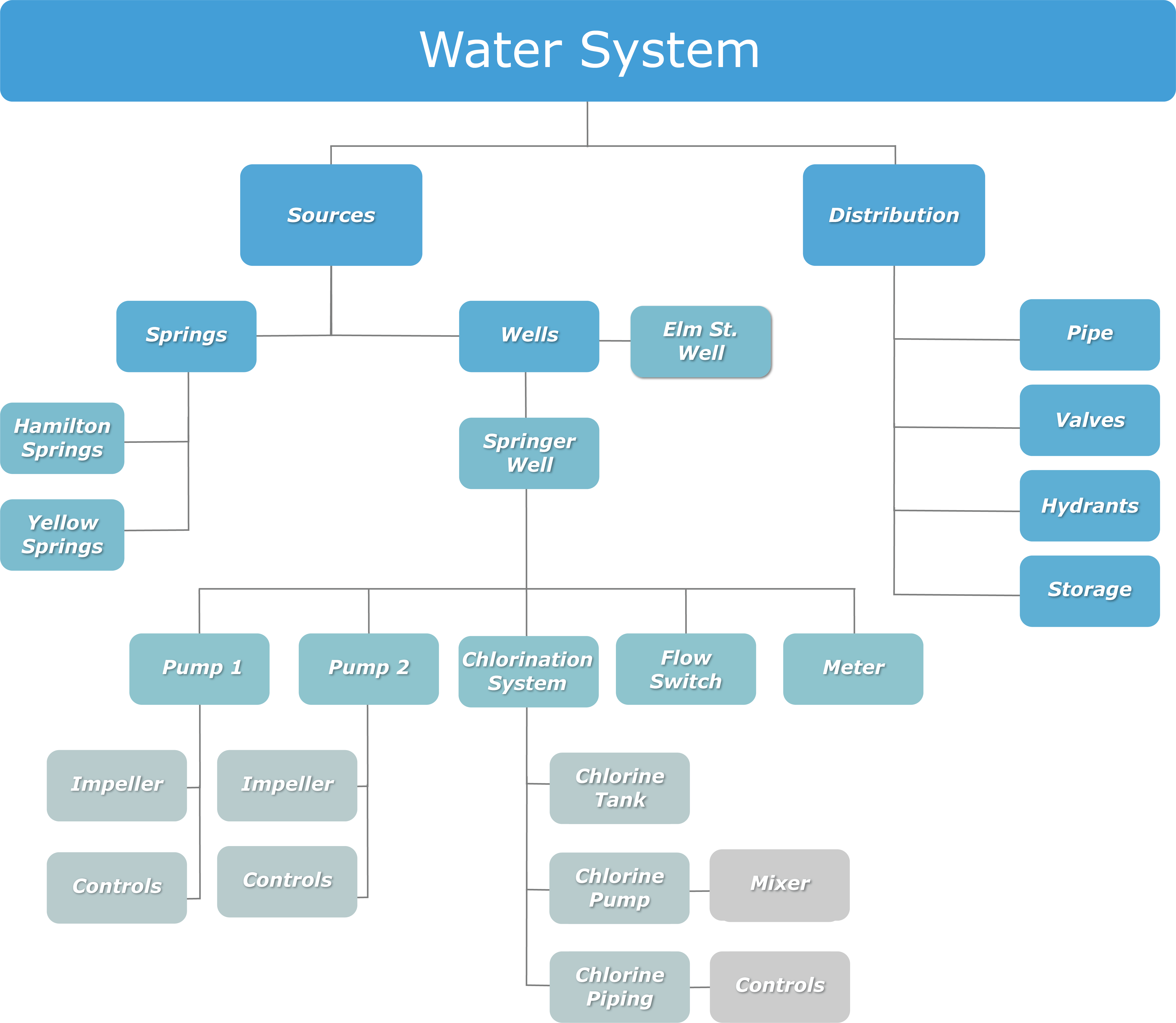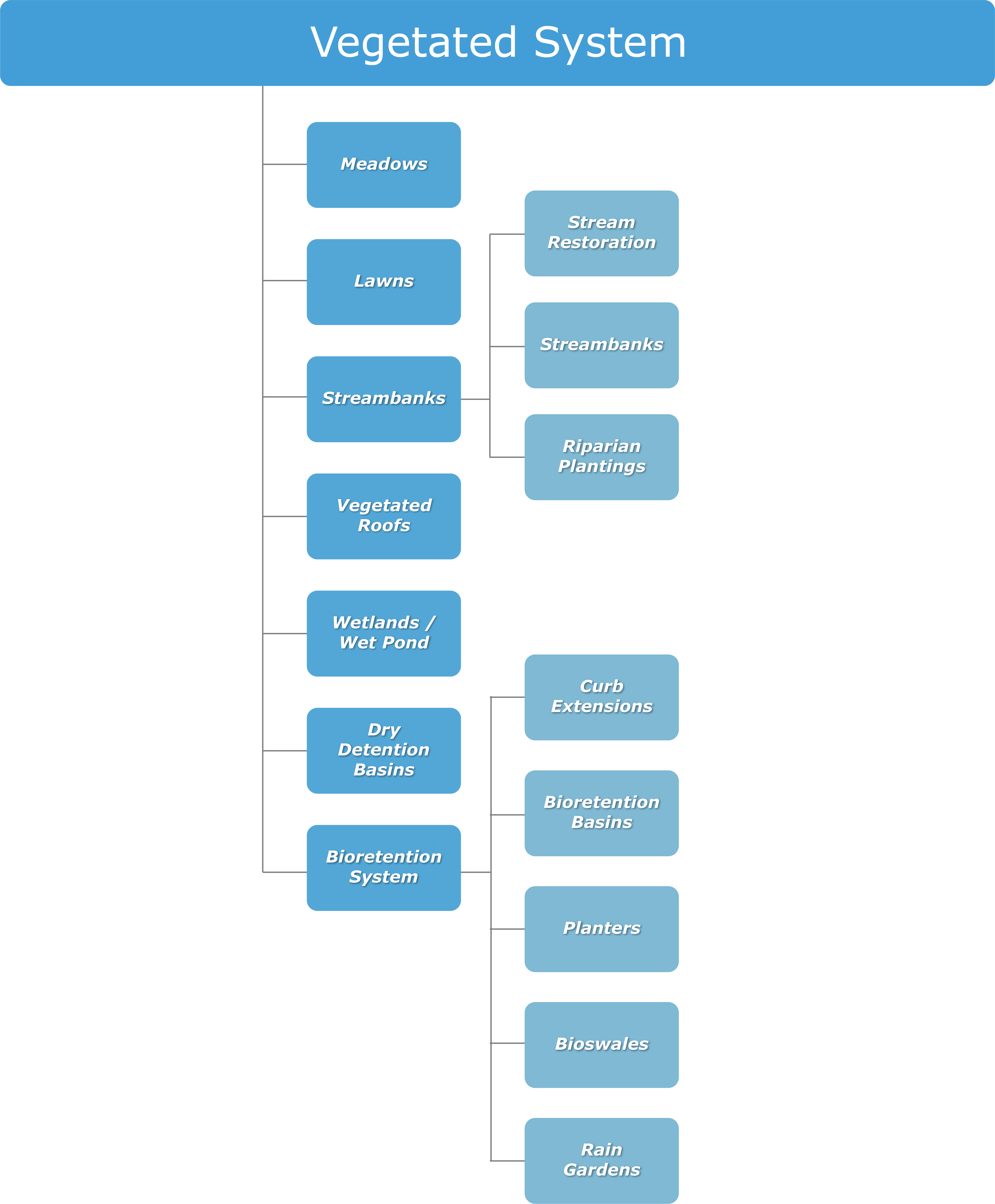Asset Hierarchy
Within a system there are oftentimes natural groupings of assets, where one asset may be a part of a larger system or function. If assets are entered into the asset inventory in such a way that these groupings are recognized, it is a lot easier to examine asset data and make decisions about asset maintenance, repairs and replacements or restoration. This type of grouping is called an asset hierarchy. The hierarchy can also be thought of as a tree structure or a parent, child, grandchild structure.
The asset at the top of the list is the parent asset, the next level is the child asset, the next is the grandchild asset and so on. If you work from the bottom up, assets can be “rolled” up into higher and higher categories until the final level includes all of the assets in the system. If you have multiple facilities that are completely independent of each other, each one of those can be a parent asset category or the parent can be the type of system such as drinking water, wastewater or stormwater with the child asset the name of each of the independent systems. The system may want to consider utilizing function as a parent category. For example, the functions for stormwater assets might include: conveyance, treatment, capture.
Developing a hierarchy structure can be done in a variety of ways. The most common method is to start at the top and work down. There are standards that can be utilized or referenced when developing the hierarchy structure if the system finds them beneficial. When developing a hierarchy, there are things to consider about the assets and their components and where they fit within the system. For example, consider a pump set that consists of a pump, motor, and controls. Staff must determine if the pump set is the parent and the pump, motor, and controls are children assets. Then staff must decide if the valves associated with the pump are children or grandchildren to the pump set or if they belong to the pipework. These decisions may differ in different locations. There is not one correct answer; each system must consider how the hierarchy works best for them and apply the approach as consistently as possible across the system.
One benefit to an asset hierarchy is to be able to “roll up” or group together assets within a system or process. This then allows the development of costs for the entire system or for groups of assets, such as the total cost of the assets within an area, the total cost of an asset group or the total cost of all assets of one type. Another benefit is being able to drill down through the hierarchy to find a specific asset quickly.
The identification of asset categories (parent assets) within the system should be done in consultation with the various divisions within the system. It should also be supported by existing documents, such as Stormwater BMPBest Management Practice Manuals, O&MOperations and Maintenance Manuals, Financial records, etc.
Examples of some hierarchy structures are provided for the following:
Multiple Facilities

Water System

Stormwater System

Credit MSD of Greater Cincinnati